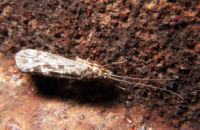
Photo from wikipedia
Herbicides are the most common agrochemicals used in crops. Among them, glyphosate is the most widely applied in the world. Herbicides, especially organophosphates, have been shown to be hazardous to… Click to show full abstract
Herbicides are the most common agrochemicals used in crops. Among them, glyphosate is the most widely applied in the world. Herbicides, especially organophosphates, have been shown to be hazardous to non-target species, including amphibians. The present study evaluated the acute and chronic effects of glyphosate-based herbicide (GBH), Roundup original® DI on tadpoles from two South American native species, Physalaemus cuvieri and P. gracilis. Spawnings were collected in the natural environment and maintained in the laboratory under controlled conditions. Acute and chronic toxicology trials began at stage 25 of Gosner (Herpetological 16:183–190, 1960). In an acute toxicity assay, seven GBH concentrations between 100 and 4500 μg a.e./L were tested over 96 h. For the chronic trials, tadpoles were subjected to both doses allowed by Brazilian legislation and to concentrations found in natural environment waters from Brazil and Argentina, between 65 and 1000 μg a.e/L over 14 days. Glyphosate had lethal effects on both studied species. Tadpoles showed shorter lengths and lower masses; that is, those that survived suffered chronic effects on growth and weight. The GBH maximum acceptable toxicant concentration for mortality and malformation was lower than the allowed level for Brazilian waters. The GBH tested in this study presented a high environmental and acute risk for the two studied species.
Journal Title: Environmental Science and Pollution Research
Year Published: 2020
Link to full text (if available)
Share on Social Media: Sign Up to like & get
recommendations!